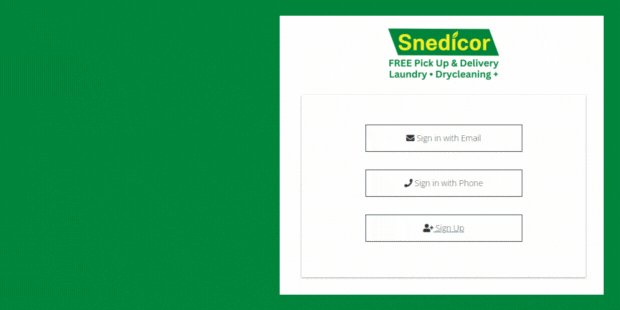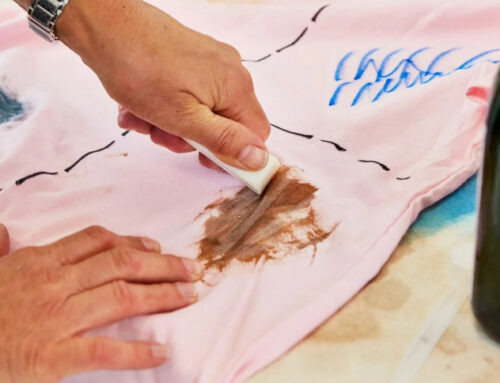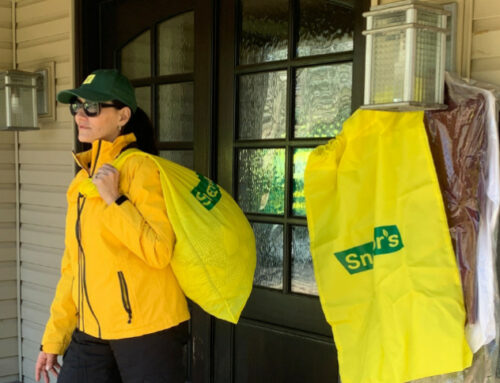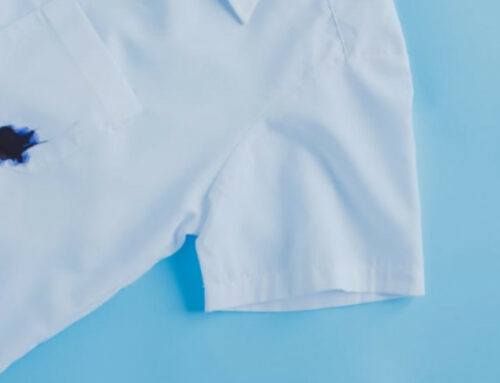By Jim Gilligan
By now, you’ve probably heard that dry cleaners use different chemicals, including solvents, to clean clothes. You may have also heard that some cleaning solvents are better or worse for your clothing, and some are better or worse for you and the environment.
.png)
In 2007 Snedicor’s was at the forefront of alternative dry cleaning methods in Michigan when I converted our entire dry cleaning department to the GreenEarth Cleaning process. In 2015 I added the Harmony Wet Cleaning system to our existing wet cleaning department. Over the years, we’ve fielded hundreds of questions concerning the differences between dry cleaning methods.
This article will cover 5 of the most widely used clothes cleaning chemicals and their effect on your clothing, the environment, and you.
After reading this, you will be prepared to make an educated decision when choosing a dry cleaning service based on your knowledge of what chemicals are being used to clean customers’ clothing and household textiles like bedding and curtains.
What is dry cleaning?
Drycleaning is the process of cleaning fabric using solvents other than water. It might surprise you to learn that dry cleaning solvents are liquids. The “dry” in dry cleaning is a chemistry term that means devoid of water.
Five of the most common dry cleaning solvents in use today, plus a surprise one!
1 Perchloroethylene (Perc)
Perchloroethylene (Perc) is also known as Tetrachloroethylene. It is a clear, colorless, non-flammable liquid with a distinctive ether-like smell. Roughly 60% of cleaners in the U.S. use perc.
How well does it clean?
Perc is an excellent cleaning agent that dissolves greases and oils very well. Additives are needed to remove “wetside” stains such as grass, blood, or beverages.
Possible cleaning problems.
Perc is the most aggressive solvent on this list. Besides stains and grease, perc can also dissolve many beads, sequins, adhesives, trims, and other materials commonly used in the manufacture of garments and other textiles.
Safety and environmental concerns and considerations.
Perc is toxic and considered a possible carcinogen. It is also a VOC (Volatile Organic Compound) that can negatively impact indoor air quality and the environment. Many experts recommend hanging garments cleaned in perc outdoors or in the garage so they can off-gas any perc fumes left over from the cleaning process before bringing them indoors. VOCs play a significant role in forming ozone and fine particulates in the atmosphere. Perc is heavier than water, so accidental releases can cause groundwater contamination.
For more safety information, check out the Material Data Safety Sheet (MSDS) for perchloroethylene.
2 Hydrocarbon
Hydrocarbon-based drycleaning solvents, such as Isoparaffinic Hydrocarbon, are colorless, odorless liquids that are a byproduct of gasoline manufacturing. Although petroleum-based, this solvent is less flammable than the old-school solvents due to its higher flashpoint. Roughly 30% of cleaners in the U.S. use hydrocarbon solvents.
How well does it clean?
Hydrocarbon solvents are less aggressive on beads, sequins, trims, and adhesives than perchloroethylene. They are also less aggressive on grease, oils, stains, and soil and do not remove them from fabrics as well.
Possible cleaning problems.
Generally, hydrocarbon solvents are safer for most garments and other textiles than perc.
Safety and environmental concerns and considerations.
Hydrocarbon is a VOC (Volatile Organic Compound) that can negatively impact indoor air quality and the environment. VOCs play a significant role in forming ozone and fine particulates in the atmosphere.
For more safety information, check out the Material Data Safety Sheet (MSDS) for hydrocarbon.
3 Siloxane (Silicone)
Siloxane is a clear, odorless liquid. The primary ingredients in this highly synthesized solution are sand (silicon dioxide) (SiO2) and water. It’s estimated that less than 5% of cleaners in the U.S. use a silicone solution. Silicone cleaners are easily identified as being GreenEarth Cleaning affiliates, and they can be found on the Store Locator on the GreenEarth website.
How well does it clean?
Silicone is less aggressive than perc but is on par with hydrocarbon. Silicone is very gentle and safer for beads, sequins, trims, and adhesives than petroleum-based solvents. It is also known for keeping whites bright and colors vibrant since it causes less dye transfer (dye bleeding).
Possible cleaning problems.
Generally, silicone-based solvents are safe for most garments and other textiles.
Safety and environmental concerns and considerations.
Silicone chemistry is entirely different from carbon chemistry. Siloxane is neither a VOC nor a groundwater contaminant. Siloxane has been used in health and beauty products like cosmetics and deodorants for decades.
For more safety information, check out the Material Data Safety Sheet (MSDS) for siloxane.
4 Modified Alcohol Solvent
Modified alcohol solvent is a colorless liquid with a mild odor. This solvent does contain hydrocarbon.
How well does it clean?
Modified alcohol solvents provide excellent cleaning results on par with Hydrocarbon and are less aggressive on beads, sequins, trims, and adhesives than perchloroethylene.
Possible cleaning problems.
Generally, modified alcohol solvents are safe for most garments and other textiles.
Safety and environmental concerns and considerations.
For more safety information, check out the Material Data Safety Sheet (MSDS) for modified alcohol solvent.
5 Liquid Carbon Dioxide (CO2)
Liquid carbon dioxide cleaning involves cleaning clothes and other textiles in a bath of carbon dioxide under high pressure. High pressure keeps CO2 in its liquid form. It is clear, colorless, and odor free. Less than 1% of cleaners in the U.S. use liquid CO2.
How well does it clean?
Of the other solvents mentioned here, liquid CO2 is the least effective cleaning agent for removing stains, soil, greases, and oils. It is very gentle on beads, sequins, trims, and adhesives.
Possible cleaning problems.
The only real problem may be finding a drycleaner that uses liquid carbon dioxide. The technology was one of several eco-friendly entrants into the drycleaning solvent market in the early 2000s but has yet to gain wide popularity. Virtually no one is working with CO2 anymore due to high machine costs, lack of cleaning effectiveness, and lack of unified support by any vendor or supplier.
Safety and environmental concerns and considerations.
CO2 is a naturally occurring chemical in our environment. However, it is considered a greenhouse gas, and CO2 dry cleaning machines emit some carbon dioxide during every cleaning cycle.
For more safety information, check out the Material Data Safety Sheet (MSDS) for liquid carbon dioxide.
6 Wet cleaning (Water) Surprise!
As you may have gathered from the name, wet cleaning is the opposite of dry cleaning because it uses water rather than a “dry” chemical. Water is the original clothes cleaning solvent.
But if you’ve ever accidentally washed and dried a cashmere sweater and turned it into a Barbie sweater or shredded a silk tie in the wash, you know water can be the enemy of your favorite garments.
Unlike regular old laundry, wet cleaning employs highly specialized machinery, soaps, and other chemicals. Many items that are considered “Dryclean Only” can be cleaned safely using modern wet cleaning methods. Many drycleaners employ some sort of wet cleaning method besides their traditional dry cleaning system, and some cleaners are 100% wet cleaning operations.
How does it clean?
Wet cleaning does a marvelous job of removing wetside stains such as most foods, grass and soil, and sweat. Added surfactants help with greases and oils.
Possible cleaning problems.
Wet cleaning is gentle on beads, sequins, and most trims. The cleaning operator must be diligent in testing for color fastness to ensure dyes won’t bleed in the process. Shrinkage can occur if the wet cleaning machine is not programmed correctly for the type of fabric being cleaned.
Safety and environmental concerns and considerations.
There are no real health concerns with wet cleaning. Some wet cleaning systems use natural soaps, and some use synthetic soaps. Worth checking into if you lean one way or the other. The only real environmental concerns are water usage and microfibers being released into the sewer that makes their way into our waterways and food stream. Some cleaners have recently begun installing industrial size microfiber filters on the wet cleaning machine drain outlet to capture microfibers from entering our waterways.
Which chemical is best for you, your garments, and the environment?
In this article, you learned the differences between the most common dry cleaning chemicals in use today as well as the difference between dry cleaning and wet cleaning.
Now you can make an educated decision when selecting a professional dry cleaning service based on your personal, environmental, and clothing care needs.
If you’re ready to try our nontoxic, eco-friendly cleaning methods risk-free, we have full-service and self-service scheduling options. You can also email, message, text, chat, or call us anytime!
Still not sure which solution is right for you? Check out my article explaining the ins and outs of organic dry cleaning and my in-depth wet cleaning article.






